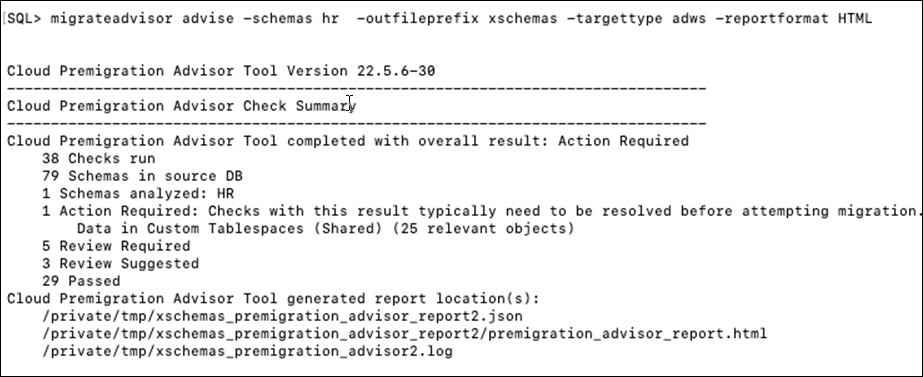9.1 Overview
Using the MIGRATEADVISOR command in SQLcl, you can:
-
Analyze an Oracle database to a generic autonomous type or specific instance, and create reports identifying actions recommended for successful migration to Oracle Cloud. A report can be generated in HTML, text or JSON format.
-
Optionally, generate a target properties file that will provide more details specific to an autonomous instance.
The following image shows a CPAT report in HTML format.
CPAT Concepts
The source analysis in CPAT is done generically for different cloud types:
- ATPS (Autonomous Transaction Processing on Shared Infrastructure)
- ATPD (Autonomous Transaction Processing on Dedicated Infrastructure)
- ADWS (Autonomous Data Warehouse on Shared Infrastructure)
- ADWD (Autonomous Data Warehouse on Dedicated Infrastructure)
- Default (Oracle Database)
The source analysis consists of a series of tests that are executed as SQL Statements. The scope of the tests fall into three categories:
- SCHEMA: Checks that are only applicable to data within schemas. For example, tables are checked for usage of deprecated and desupported features.
- INSTANCE: Checks that are
only applicable to the database instance as a whole. For
example, certain parameters and values in the
V$PARAMETERtable are checked. - UNIVERSAL: Checks that are always run.
The source analysis can run in FULL mode, SCHEMA MODE or FULL SCHEMA mode.
- FULL: (Default) Executes all applicable checks in all appropriate schemas. SCHEMA, INSTANCE, and UNIVERSAL scope checks are executed.
- SCHEMA: Executes all applicable checks for schemas specified on the command line and UNIVERSAL checks. INSTANCE scope checks are not executed.
- SCHEMA FULL: Executes all applicable checks for schemas specified on the command line and UNIVERSAL and INSTANCE checks.
